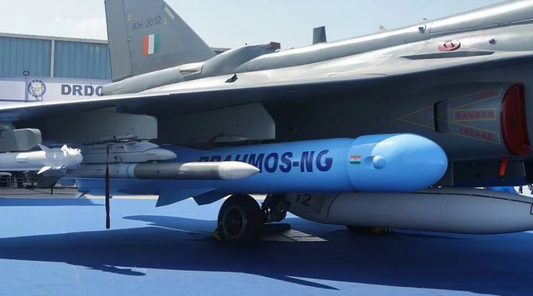Meet Adaso Kapesa: First Woman To Join PM Narendra Modi's Elite Security Team

In a landmark moment for gender inclusivity and empowerment, Inspector Adaso Kapesa has etched her name in history as the first woman to join the Special Protection Group (SPG), the elite security force responsible for the personal protection of the Prime Minister of India. Her journey from a remote village in Manipur to the forefront of national security is not just a personal triumph but a beacon of inspiration for women across India, particularly those aspiring to break barriers in traditionally male-dominated fields.
A Trailblazer from Manipur
Adaso Kapesa hails from Kaibi village in Senapati district, Manipur, a region often characterized by challenging terrain and limited resources. Growing up in such an environment, Kapesa nurtured ambitious dreams from an early age. She began her career with the Sashastra Seema Bal (SSB), a Central Armed Police Force under the Ministry of Home Affairs, where she served with distinction in the 55th Battalion stationed in Pithoragarh, Uttarakhand. Her exemplary performance, resilience, and dedication caught the attention of higher authorities, leading to her selection for the SPG after undergoing rigorous commando training that tested her physical endurance, mental sharpness, and total readiness.
| Background Details | Description |
|---|---|
| Hometown | Kaibi village, Senapati district, Manipur |
| Initial Career | Sashastra Seema Bal (SSB), 55th Battalion, Pithoragarh, Uttarakhand |
| Training | Intensive SPG commando training in combat, intelligence, and crisis response |
The Special Protection Group: India's Elite Security Force
The SPG is India’s most prestigious protective unit, established in 1985 following the assassination of Prime Minister Indira Gandhi. Tasked with the personal security of the Prime Minister and, in certain cases, former Prime Ministers and their families, the SPG is renowned for its highly trained officers. These officers undergo intensive training in close-quarter combat, intelligence operations, surveillance, and emergency response, making the SPG one of the toughest postings in Indian security forces. Until Kapesa’s induction, the SPG was an all-male unit, making her appointment a historic milestone.
| SPG Overview | Details |
|---|---|
| Established | 1985, post the assassination of Indira Gandhi |
| Primary Role | Personal security of the Prime Minister and select former PMs/families |
| Training | Close-quarter combat, intelligence, surveillance, crisis response |
| Significance | Elite, highly selective unit; previously all-male |

Breaking Barriers and Setting Precedents
Kapesa’s inclusion in the SPG is a groundbreaking achievement that challenges traditional gender roles in India’s security apparatus. Her calm and composed presence during Prime Minister Narendra Modi’s recent visit to the United Kingdom, where she was seen standing guard behind him, captured the nation’s attention. The viral photograph of Kapesa in her black suit and earpiece became a powerful symbol of progress, sparking widespread admiration on social media. Netizens hailed her as a “trailblazer,” “symbol of strength,” and “powerful inspiration,” particularly for young women aspiring to careers in law enforcement and defense.
Her role is not merely symbolic but strategic. Experts, such as Sudeep Lakhtakia, a former SPG officer, have noted that women bring unique strengths to security operations, including cognitive edge, tactical deception, and emotional intelligence—traits vital for assessing threats in real-time. Kapesa’s presence in the SPG paves the way for more women to aspire to and achieve roles in elite security forces, breaking one of the last gender barriers in India’s top-tier security apparatus.
An Inspiration to Many
Kapesa’s journey from a small village in Manipur to guarding the Prime Minister of India is particularly inspiring for women from underrepresented communities. Her story demonstrates that with hard work, determination, and skill, one can overcome systemic barriers and achieve the seemingly impossible. Social media has been abuzz with messages of pride, with many expressing admiration for seeing a woman from the Northeast in such a prestigious role. Her success resonates deeply with young girls and women across India, proving that no dream is too big and no barrier is insurmountable.
| Inspirational Impact | Details |
|---|---|
| Community Impact | Symbol of pride for Manipur and Northeast India |
| Social Media Praise | Called “trailblazer,” “symbol of strength,” and “inspiration” |
| Target Audience | Young women, especially from underrepresented regions, aspiring in defense |
The Broader Impact
The induction of Inspector Adaso Kapesa into the SPG reflects a significant shift in the landscape of India’s security forces. It signals a growing recognition of the capabilities and contributions of women in roles traditionally considered male domains. Her presence enhances the diversity of the SPG and brings unique perspectives and skills crucial for elite security operations. As Kapesa continues to serve with distinction, she not only protects the nation’s leader but also inspires a new generation of women to pursue careers in security and defense.
Conclusion
Inspector Adaso Kapesa’s historic role in the SPG is a testament to perseverance, courage, and the power of breaking barriers. Her journey from a remote village in Manipur to standing guard beside the Prime Minister exemplifies what can be achieved with dedication and skill. As a trailblazer, Kapesa is not only safeguarding India’s leader but also paving the way for future generations of women to dream big and aim high in the field of security and beyond.



















